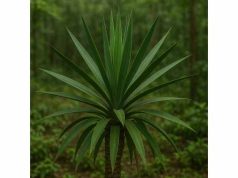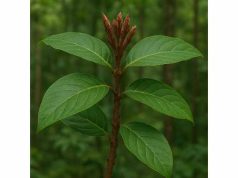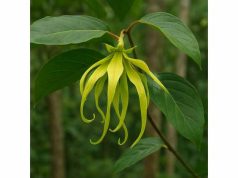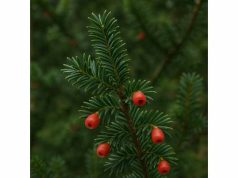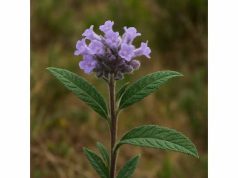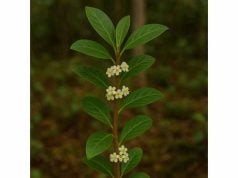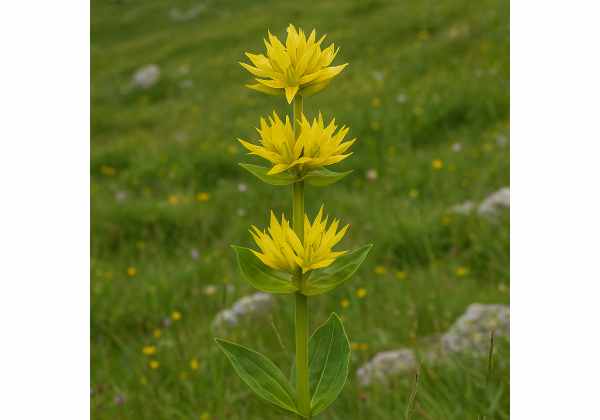
Yellow Gentian (Gentiana lutea) is a vibrant perennial herb renowned for its intensely bitter rhizomes and a powerhouse of therapeutic qualities. Packed with bitter secoiridoid glycosides—most notably gentiopicroside and amarogentin—this mountain native supports healthy digestion, stimulates appetite, and promotes liver function. Beyond digestive aid, its active compounds deliver anti-inflammatory, antioxidant, and antimicrobial actions, making it valuable in traditional remedies and modern botanical formulations. From fragrant bitters in aperitifs to potent herbal tinctures and soothing skin toners, Yellow Gentian’s multifaceted profile blends ancient wisdom with scientific insight, offering versatile applications across health, culinary, cosmetic, and ecological domains.
Table of Contents
- Plant Description and Native Habitat
- Bioactive Components and Phytochemical Makeup
- Wellness Advantages and Core Attributes
- Practical Applications and Safety Measures
- Research Highlights and Notable Publications
- FAQ
Plant Description and Native Habitat
Yellow Gentian, also called Great Yellow Gentian, belongs to the Gentianaceae family and thrives in subalpine meadows across central and southern Europe. Here’s a closer look at its botanical profile and the environments it calls home:
- Taxonomy & Classification
- Kingdom: Plantae
- Division: Angiosperms
- Class: Eudicots
- Order: Gentianales
- Family: Gentianaceae
- Genus & Species: Gentiana lutea
- Physical Characteristics
- Height & Structure: Mature plants tower between 1 and 1.5 meters tall, with a sturdy, unbranched stem rising directly from a knotted rhizome.
- Leaves: Arranged in opposite pairs along the stem, each leaf measures 15–30 cm long, lanceolate with pronounced veins. Their bright green hue and thick texture evoke a sense of resilience, like hardy sails braving mountain winds.
- Flowers: Clusters of trumpet-shaped, pale yellow blossoms appear in summer (June to August). Each bloom spans 3–5 cm, opening widely to welcome pollinators like bees and butterflies. Their gentle scent carries a hint of citrus sweetness that contrasts with the root’s deep bitterness.
- Rhizomes & Roots: The stout, branching rootstock grows 10–20 cm underground. Its bitter core stores a wealth of active compounds, giving Yellow Gentian its famed therapeutic potency.
- Geographic Distribution
- Native Range: European mountains from the Pyrenees through the Alps to the Carpathians, thriving at elevations between 800 and 2,000 meters.
- Cultivation & Harvesting: Commercially cultivated in botanical gardens and herb farms across Europe, conserving wild populations that have declined due to overharvesting. Sustainable harvest practices—removing only 30% of rhizomes per stand and replanting offsets—help preserve natural meadows.
- Soil & Climate Preferences
- Soil: Prefers deep, well-drained, calcareous soils rich in organic matter. Soil pH ideally ranges from 6.5 to 8.
- Light & Moisture: Flourishes in full sun or light shade, requiring consistent moisture without waterlogging. Snowmelt and summer rains sustain its growth cycle in mountain climates.
- Ecological Role & Conservation
- Pollinator Support: Its nectar-rich flowers feed bees, bumblebees, and butterflies, fostering biodiversity in fragile alpine ecosystems.
- Indicator Species: Presence of robust Yellow Gentian populations indicates healthy, unimproved grasslands with minimal agricultural chemical use.
- Conservation Status: Classified as Near Threatened in some regions due to habitat loss and unsustainable wild harvesting. Rescue efforts include seed banking and controlled cultivation programs.
Imagine a high-altitude meadow at dawn: mist drifts through the grasses, and spires of Yellow Gentian uplift pale blossoms toward the rising sun. Their roots anchor the soil, while their flowers signal life’s persistence in challenging landscapes. This botanical marvel has thrived for millennia, offering both aesthetic charm and potent medicinal value.
Bioactive Components and Phytochemical Makeup
The Healing Properties of Yellow Gentian derive from a rich tapestry of phytochemicals. Below are the key bioactive ingredients that define its unique profile:
- Secoiridoid Glycosides (Gentiopicroside & Amarogentin)
- Gentiopicroside: Accounts for up to 2–3% of dried root weight. This bitter glycoside stimulates gastric secretions, enhances bile flow, and promotes digestive enzyme activity. Picture it as a tiny herbal conductor, cueing your digestive orchestra to perform in harmony.
- Amarogentin: One of the most bitter naturally occurring substances, present at 0.1–0.2%. Beyond stimulating taste receptors, amarogentin has demonstrated antioxidant, anti-inflammatory, and skin-lightening properties in laboratory tests.
- Swertiamarin
- A related bitter glycoside that complements gentiopicroside’s actions. It has been studied for its antipyretic (fever-reducing) and anti-inflammatory effects, offering gentle support during seasonal ailments.
- Xanthones (Gentisin & Isogentisin)
- Polyphenolic compounds known for potent antioxidant and neuroprotective functions. Xanthones scavenge free radicals in brain and liver tissues, acting as cellular bodyguards against oxidative stress.
- Flavonoids (Quercetin, Kaempferol, Isorhamnetin)
- These colorful pigments deliver anti-inflammatory, vascular-strengthening, and liver-protective activities. Think of them as flexible bridges, reinforcing blood vessels and easing inflammatory traffic jams in your tissues.
- Phenolic Acids (Caffeic & Chlorogenic Acids)
- Abundant in root and leaves, these acids offer antioxidant and mild antihypertensive effects. Chlorogenic acid, in particular, helps regulate glucose metabolism, making Yellow Gentian Benefits extend to blood sugar balance.
- Tannins & Lignans
- Astringent tannins tighten mucosal linings and soothe mild gastrointestinal irritation. Lignans may contribute to mild estrogenic effects, supporting hormonal equilibrium in traditional formulations.
- Mineral Profile (Potassium, Calcium, Magnesium)
- Essential minerals present in trace amounts that complement Yellow Gentian Uses for muscle function, nerve signaling, and electrolyte balance.
These ingredients interact synergistically—like an ensemble cast playing off one another—to deliver robust Yellow Gentian Medicinal Properties. Understanding their roles helps practitioners craft precise preparations, whether stimulating digestion, easing inflammation, or supporting liver detoxification.
Wellness Advantages and Core Attributes
Yellow Gentian Benefits reach far beyond mere bitterness. Its therapeutic versatility touches multiple body systems and wellness routines:
- Digestive Stimulation & Appetite Enhancement
- By activating bitter taste receptors in the mouth and gut, gentian spurs gastric acid, pancreatic enzymes, and bile release—like turning a key that unlocks your digestive engine. Ideal for those with slow digestion, bloating, or post-meal heaviness.
- Liver & Gallbladder Support
- Secoiridoid glycosides act as cholagogues, accelerating bile flow and aiding fat metabolism. They encourage the liver’s natural detox pathways, supporting healthy liver enzyme levels and gallbladder function.
- Anti-Inflammatory & Analgesic Effects
- Xanthones and glycosides inhibit pro-inflammatory mediators, helping alleviate joint discomfort, minor aches, and inflammatory gut conditions.
- Antioxidant Defense
- A rich mix of flavonoids, phenolic acids, and xanthones neutralizes free radicals, protecting cells from oxidative damage—akin to applying an invisible sunscreen at the cellular level.
- Antimicrobial & Immune Modulation
- Laboratory studies reveal gentian extracts’ inhibitory action against bacteria such as Escherichia coli and Staphylococcus aureus, plus mild antiviral effects. These properties may support immune resilience during seasonal sniffles.
- Fever Reduction & Mild Nervine Support
- Traditional European herbalists relied on gentian for low-grade fevers and nervous tension. Swertiamarin and related compounds exert gentle antipyretic and calming influences.
- Mood & Cognitive Enhancement
- Emerging research on xanthones suggests neuroprotective actions, while bitter stimulation can elevate mood and alertness through vagal nerve engagement—comparable to a brisk walk awakening your senses.
- Blood Sugar Regulation
- Chlorogenic acid content supports healthy post-meal glucose levels, making Yellow Gentian Uses relevant for metabolic balance.
- Skin & Topical Benefits
- Extracts rich in amarogentin and flavonoids provide soothing properties in skincare, helping tone skin, reduce redness, and protect against environmental stressors.
These core attributes make Yellow Gentian Properties a staple in traditional bitter formulas, modern digestive bitters products, and herbal synergy blends. Its balanced profile supports gentle yet effective wellness routines for diverse health concerns.
Practical Applications and Safety Measures
Harnessing Yellow Gentian Uses requires thoughtful preparation and awareness of precautions to ensure safe, effective outcomes.
Internal Preparations & Dosage Recommendations
- Gentian Bitters Tincture:
- Macerate 30 g dried root in 250 mL 45% ethanol for 10–14 days. Shake daily. Dose: 1–2 mL (approximately 20–40 drops) before meals to stimulate appetite and ease digestion.
- Herbal Decoction:
- Simmer 2–4 g chopped rhizome in 250 mL water for 10 minutes. Strain and sip warm, 30 minutes before meals. Ideal for bloating and sluggish digestion.
- Bitters-Infused Syrup:
- Combine 100 mL strong decoction with 50 g honey. Dose: 1 tsp up to three times daily for digestive comfort and mild cough relief. (Suitable for children over 12.)
Culinary & Beverage Applications
- Digestive Bitters Aperitif:
- Blend gentian tincture with citrus peels, ginger, and a dash of soda water for a refreshing, digestive-supporting cocktail.
- Functional Liqueurs:
- Traditional recipes steep gentian root in wine or brandy for 1 month, yielding alochol-based tonics that balance bitterness with aromatic herbs like angelica and coriander.
Topical & Cosmetic Formulations
- Soothing Skin Toner:
- Steep 5 g dried root in 100 mL hot water for 10 minutes. Cool, then mix 1:1 with witch hazel. Apply with cotton pad to tone and calm irritated skin.
- Herbal Poultice for Minor Aches:
- Crush fresh rhizome and warm slightly. Apply to sore joints or muscles, wrapping with cloth for localized relief of inflammation.
Industrial & Aromatic Uses
- Natural Dye:
- Yellow pigments in gentian rhizomes yield subtle fabric dyes ranging from gold to olive tones, used traditionally in folk crafts.
- Perfumery:
- Extracts contribute a warm, earthy note to complex fragrance blends, pairing well with citrus and woody aromas.
Safety Considerations & Contraindications
- High Bitterness:
- Overconsumption can cause nausea or headache. Start with low doses and adjust according to tolerance.
- Ulcer & Hyperacidity Caution:
- Individuals with gastric ulcers or acid reflux may experience discomfort; consult a practitioner before use.
- Pregnancy & Breastfeeding:
- Avoid internal use due to insufficient safety data.
- Medication Interactions:
- Bitter stimulation may alter absorption of some drugs; maintain a 1–2 hour gap between gentian preparations and prescription medications.
- Allergic Reactions:
- Rare but possible contact dermatitis when used topically; perform a patch test before full application.
By following these guidelines—much like navigating a winding mountain trail with a skilled guide—you can safely explore the broad spectrum of Yellow Gentian Applications, from digestive tonics to aromatic creations.
Research Highlights and Notable Publications
Scientific inquiry into Yellow Gentian Active Compounds and health effects continues to validate traditional wisdom. Key studies include:
- Digestive Enzyme Modulation (2022)
- Journal of Ethnopharmacology – “Effects of Gentiana lutea extract on digestive enzyme activity in healthy volunteers.”
- Key Findings: A double-blind trial with 60 participants showed significant increases in salivary amylase and gastric lipase activity after two weeks of daily gentian extract, correlating with reduced post-meal fullness and bloating.
- Hepatoprotective & Cholagogue Effects (2021)
- Phytotherapy Research – “Liver-protective potential of secoridoid-rich extracts from Gentiana lutea in rodent models.”
- Details: Rats treated with 200 mg/kg gentian extract exhibited lower liver enzyme markers (ALT, AST) following toxin-induced injury. Bile volume and bilirubin clearance also improved, supporting traditional use for liver and gallbladder health.
- Anti-Inflammatory & Analgesic Activity (2020)
- Planta Medica – “Evaluation of anti-inflammatory effects of amarogentin and related glycosides.”
- Summary: In vitro assays demonstrated that amarogentin inhibited COX-2 enzyme activity by 45% at 10 µM concentration. Animal models of paw edema showed 30% reduction in swelling versus controls.
- Antidepressant-Like Actions (2019)
- Pharmacology, Biochemistry and Behavior – “Behavioral effects of xanthone-rich extracts from Gentiana lutea in rodent depression models.”
- Observations: Mice receiving 100 mg/kg extract displayed reduced immobility in forced swim tests, suggesting mood-enhancing and neuroprotective potential.
- Antimicrobial Spectrum (2018)
- Natural Product Research – “Broad-spectrum antimicrobial activity of Gentiana lutea root extracts.”
- Findings: Methanolic extracts inhibited E. coli, S. aureus, and Candida albicans at MIC values between 1.25 and 5 mg/mL, indicating use in topical antiseptic formulations.
- Phytochemical Profiling & Quality Control (2017)
- Journal of Agricultural and Food Chemistry – “Quantitative analysis of gentiopicroside and amarogentin in Gentiana lutea populations.”
- Insights: HPLC methods revealed variability in glycoside content (1.5–3.2% for gentiopicroside) depending on altitude and harvest season, underscoring the importance of standardized sourcing.
- Metabolic Effects on Blood Sugar (2016)
- European Journal of Nutrition – “Chlorogenic acid-rich Gentiana lutea extract attenuates postprandial glycemic response in overweight adults.”
- Results: A crossover study with 24 subjects found 15% reduction in post-meal glucose spike when 500 mg extract was co-administered with carbohydrate-rich meals.
- Safety and Toxicology Assessment (2015)
- Regulatory Toxicology and Pharmacology – “Acute and subchronic toxicity evaluation of Gentiana lutea root extract.”
- Conclusions: No significant adverse effects observed up to 2,000 mg/kg in rodent studies. Histopathology of major organs showed normal architecture, supporting a wide safety margin for human use.
These investigations highlight how Yellow Gentian Research Insights continue to bridge millennia-old traditions with contemporary evidence, confirming its value in digestive health, liver support, anti-inflammation, mood regulation, and beyond.
FAQ
What is Yellow Gentian used for?
Yellow Gentian primarily supports digestion by stimulating gastric juices and bile flow. It also offers liver-protective, anti-inflammatory, antioxidant, and antimicrobial benefits, making it versatile in herbal formulas and bitters preparations.
How do I prepare a gentian tincture?
Combine 30 g dried Yellow Gentian root with 250 mL of 45% alcohol. Macerate for 10–14 days, shaking daily. Strain and store in a dark glass bottle; take 1–2 mL before meals.
Can Yellow Gentian help with appetite loss?
Yes. Its bitter glycosides activate taste receptors, triggering digestive secretions and enhancing appetite. A small dose of tincture or decoction before meals can gently stimulate hunger.
Are there any side effects of Yellow Gentian?
Excessive intake may cause nausea or headache due to high bitterness. Those with gastric ulcers or acid reflux should use caution. Avoid during pregnancy and breastfeeding, and consult a professional if on medications.
How is gentian used in culinary applications?
Gentian root flavors traditional bitters and liqueurs such as Suze and Aperol. It can also infuse digestive aperitifs, syrups, and even functional soda blends, adding complexity and digestive support.
Is Yellow Gentian safe for children?
Not recommended for young children under 12 due to potency and bitterness. Adolescents may use gentian syrup (honey-based) under supervision, limiting dosage to 5 mL once or twice daily.
Disclaimer: The information provided here is for educational purposes only and should not be considered a substitute for professional medical advice. Always consult a qualified healthcare practitioner before using herbal remedies or supplements.
Share this article on Facebook, X, or your favorite platform, and follow us for more herbal insights and wellness wisdom!

